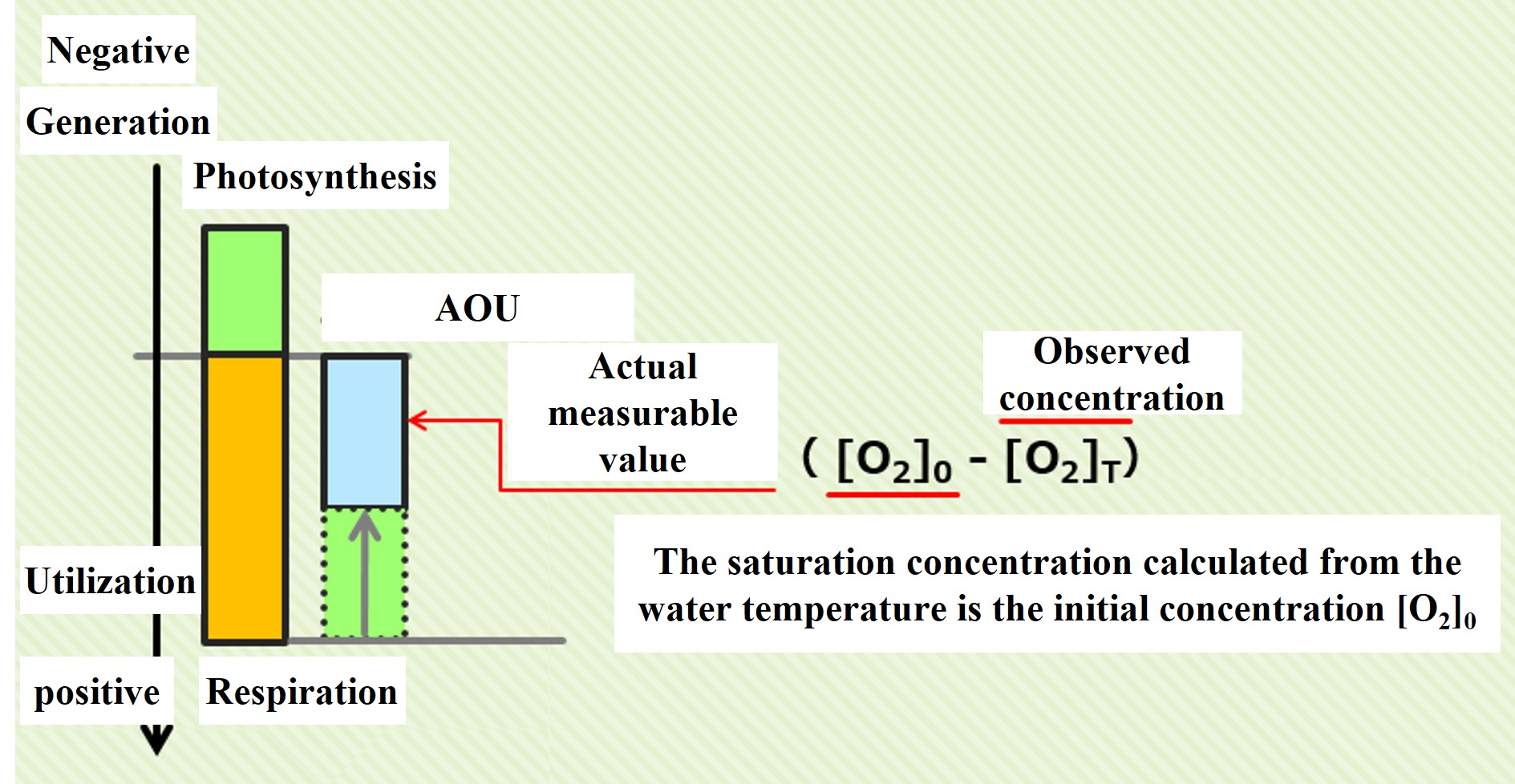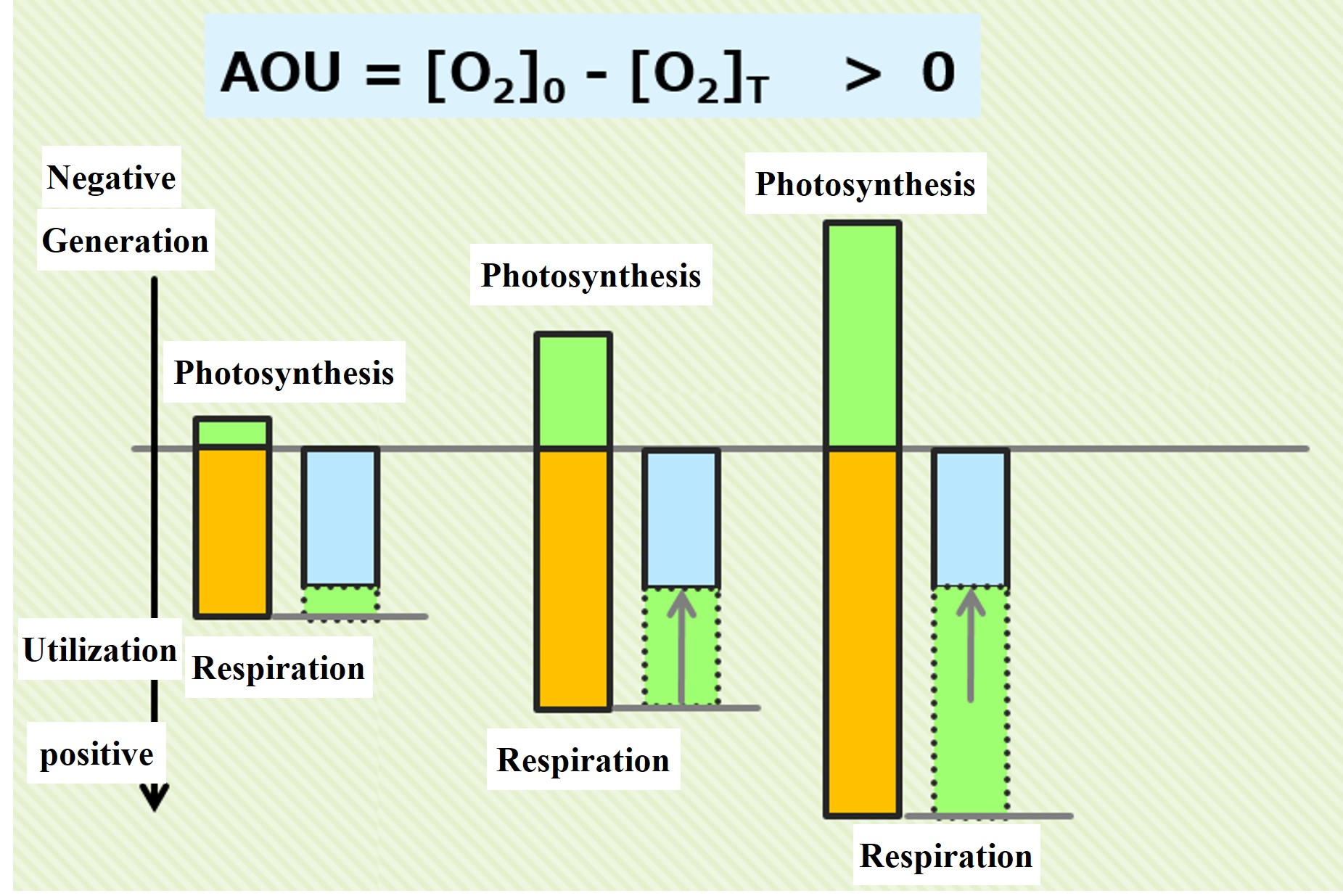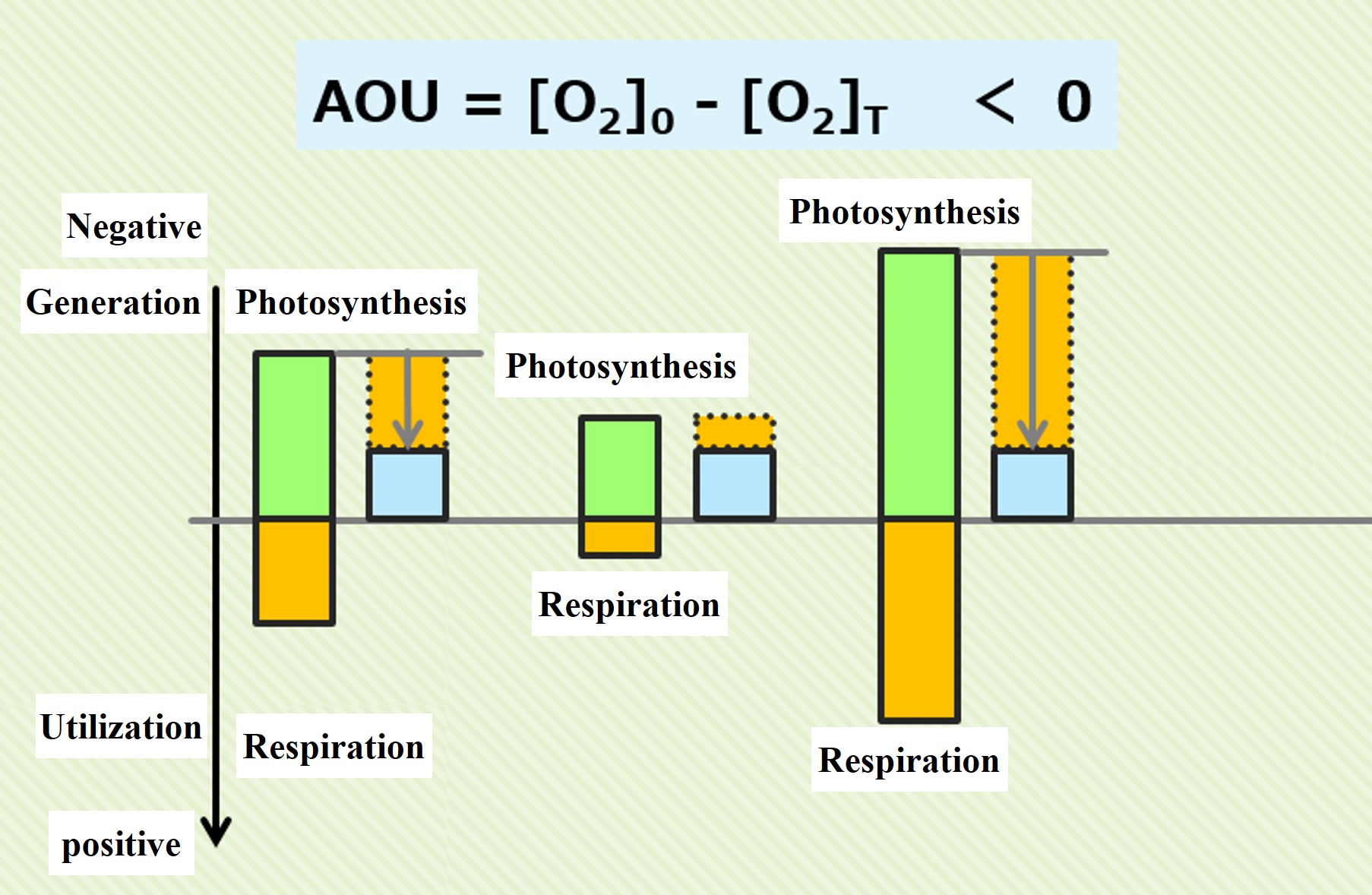Oxygen utilization in seawater can be obtained by subtracting the "oxygen concentration at a certain time T" from the "initial oxygen concentration at a certain time (0)" to obtain the oxygen utilization at time 0→T (see figure below). However, this is true only if there is no oxygen production through photosynthesis (left side of the figure below).

In seawater where light reaches, oxygen utilization through respiration and oxygen generation through photosynthesis occur simultaneously. These cannot be distinguished. In other words, it is impossible to know the "true utilization" or "true production" as far as light reaches.
Define the direction of utilization as positive,
If 「Unknown true utilization」>「Unknown real generation」,
「Net (apparent) utilization」=「Unknown true utilization」-「Unknown real generation」>0.
This means that respiration overcame photosynthesis.
Net (apparent) oxygen utilization is expressed as the "actual measurable amount" noted in the figure below. In other words, the following equation.
【Net (apparent) oxygen utilization】=【Initial oxygen concentration:[O2]0 】-【Oxygen concentration at time T:[O2]T 】
The initial oxygen concentration is often defined as the oxygen saturation concentration when that seawater was at the sea surface.

As shown in the three ways in the figure below, the net oxygen utilization can be the same when the true photosynthetic rate is small and when the true photosynthetic rate is large, and the true utilization and production cannot be determined from the net oxygen utilization.
The apparent oxygen utilization is called Apparent Oxygen Utility (AOU).
Again, if AOU > 0, then respiration > photosynthesis.

If the water is sufficiently lighted, photosynthesis can overcome respiration.
AOU < 0 reflects a photosynthesis > respiration condition.
